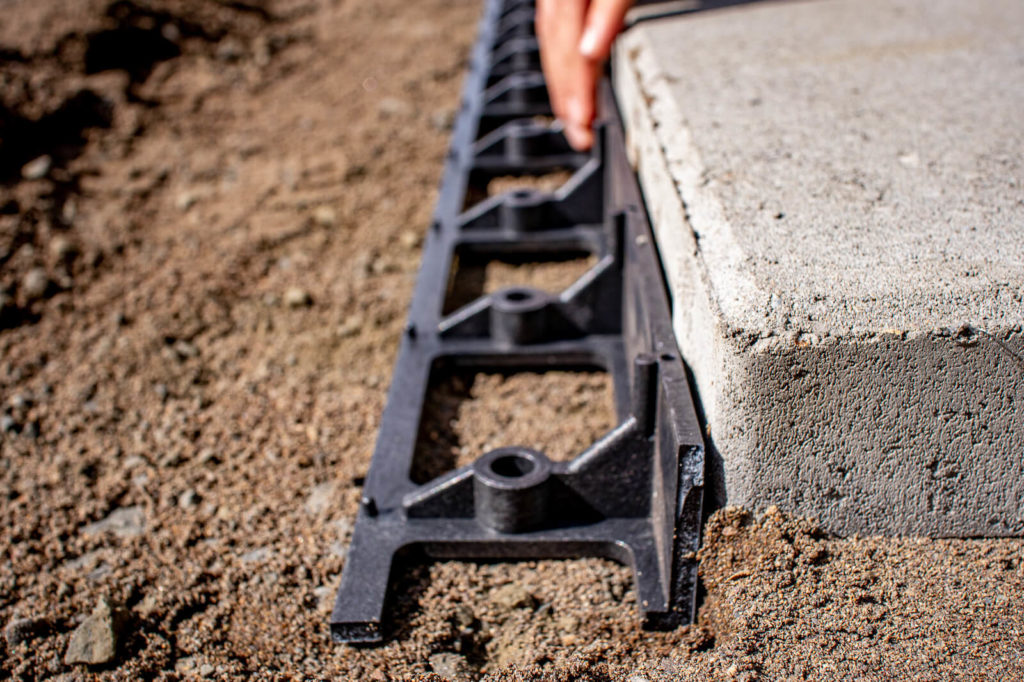
Paver Installation Edge Restraint: A Comprehensive Guide
Introduction
Paver installation edge restraints are essential components of any paving project, ensuring the longevity and stability of the paver surface. These restraints prevent pavers from shifting or spreading, maintaining their intended pattern and preventing damage. This guide provides a comprehensive overview of paver installation edge restraints, covering their types, materials, installation methods, and best practices.
Types of Paver Installation Edge Restraints
Flexible Edge Restraints
- Plastic Edging: Made of durable plastic, these restraints are flexible and easy to install. They are ideal for curved or irregular edges.
- Rubber Edging: Similar to plastic edging, rubber edging is flexible and provides a more natural appearance.
- Geotextile Fabric: A permeable fabric that prevents soil erosion and weed growth, geotextile fabric can be used as an edge restraint for pavers.
Rigid Edge Restraints
- Concrete Curbing: A permanent and durable option, concrete curbing is poured into a mold and cured to create a strong and stable edge.
- Metal Edging: Available in various metals such as steel, aluminum, or corten steel, metal edging provides a sleek and modern look.
- Stone Edging: Natural or manufactured stone edging adds an elegant and timeless touch to paver installations.
Materials for Paver Installation Edge Restraints
Plastic
- Polyethylene: A lightweight and durable plastic, polyethylene is commonly used for flexible edge restraints.
- Polypropylene: A stronger and more rigid plastic, polypropylene is suitable for both flexible and rigid edge restraints.
Rubber
- Recycled Rubber: Made from recycled tires, recycled rubber edging is environmentally friendly and provides excellent durability.
- Virgin Rubber: A more expensive option, virgin rubber edging offers superior strength and longevity.
Metal
- Steel: A strong and durable metal, steel edging is available in various thicknesses and finishes.
- Aluminum: A lightweight and corrosion-resistant metal, aluminum edging is ideal for areas with high moisture.
- Corten Steel: A weather-resistant steel that develops a protective patina over time, corten steel edging adds a unique aesthetic appeal.
Stone
- Natural Stone: Granite, limestone, and sandstone are popular natural stone options for edge restraints, offering durability and a natural look.
- Manufactured Stone: Concrete or porcelain pavers can be used as edge restraints, providing a cohesive appearance with the paver surface.
Installation Methods for Paver Installation Edge Restraints
Flexible Edge Restraints
- Dig a trench along the edge of the paver area.
- Place the edge restraint in the trench and backfill with compacted soil.
- Secure the edge restraint with stakes or pins.
Rigid Edge Restraints
- Excavate a trench and pour a concrete base.
- Install the edge restraint on the concrete base.
- Backfill around the edge restraint and compact the soil.
Best Practices for Paver Installation Edge Restraints
- Choose the Right Type: Select an edge restraint that is appropriate for the paver material, installation method, and desired aesthetic.
- Proper Installation: Follow the manufacturer’s instructions for installation to ensure proper functionality and longevity.
- Adequate Depth: Install the edge restraint deep enough to prevent pavers from shifting.
- Secure Connections: Ensure that edge restraints are securely connected to prevent gaps or movement.
- Backfill and Compaction: Backfill around the edge restraints with compacted soil to provide stability and prevent erosion.
- Maintenance: Regularly inspect and maintain edge restraints to ensure they are in good condition.
Conclusion
Paver installation edge restraints are crucial for the success of any paving project. By understanding the different types, materials, installation methods, and best practices, contractors can select and install the appropriate edge restraints to ensure the durability, stability, and aesthetic appeal of their paver surfaces.